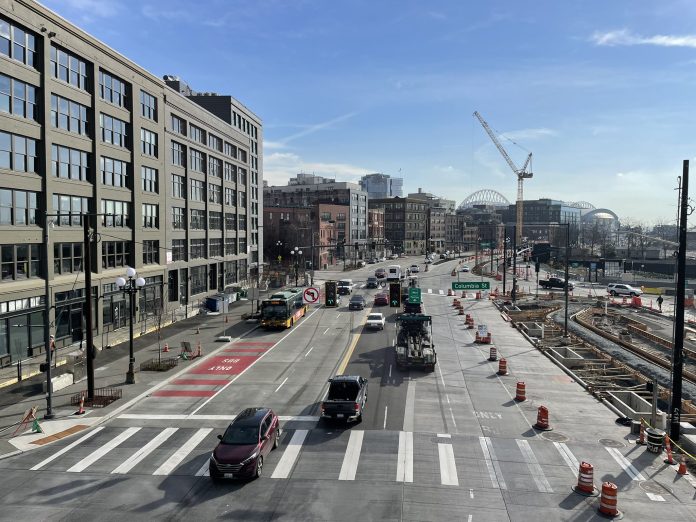
The Seattle Times editorial board recently published a take on the Seattle Waterfront, and, while the Blethen gang being wrong isn’t news, it’s also a great opportunity to talk about what actually makes a great street and public space.
Spoiler: It’s not nine lanes of traffic. But that’s what parts of the new Alaskan Way Boulevard got. The Washington State Department of Transportation (WSDOT) tore down its hulking waterfront highway viaduct only to place just as many lanes at ground level — and actually more south of Columbia Street, where the road turns into a giant queuing zone for the Seattle Ferry Terminal. Plus, of course the $4 billion SR-99 expressway tunnel underneath the city added four more bypass lanes. Plus, surprise: the new Elliott Way adds four more lanes funneling yet more cars and trucks into Belltown and the Waterfront — and directly adjacent to the new aquarium that is to be one of the park’s centerpieces.
Nonetheless, the Seattle Times was ready to declare the beleaguered project a world wonder and were taking up collection plates to close the funding gap for the $756 million project, which has had its share of unforeseen overruns — or items the state never bothered to work into the massive budget for the Alaskan Way Viaduct replacement tunnel.
“When the park is finished, it will be an asset to the community and a vast improvement from the Alaskan Way Viaduct, which loomed above the waterfront and cast a gloom from Pike Place Market to Pioneer Square. Indeed, building a tunnel, tearing down the elevated roadway, and creating more green space counts as one of Seattle’s greatest civic achievements for which we all should be proud,” the Seattle Times editorial board wrote Friday.
What did it take to convince the Blethen brain trust that a nine-lane waterfront highway is actually an asset that anchors a great public space? Apparently, some saplings will do the trick.
“Traffic noise will be part of the new park, too. But so will 150,000 plants and more than 600 trees,” they wrote. “Saplings of Sycamores, Lodgepole Pines, Green Mountain Sugar Maples and many other varieties of trees and plants are in the ground. While the recent concrete strike has delayed road work, expansion of the new park promenade is expected to continue this year.”
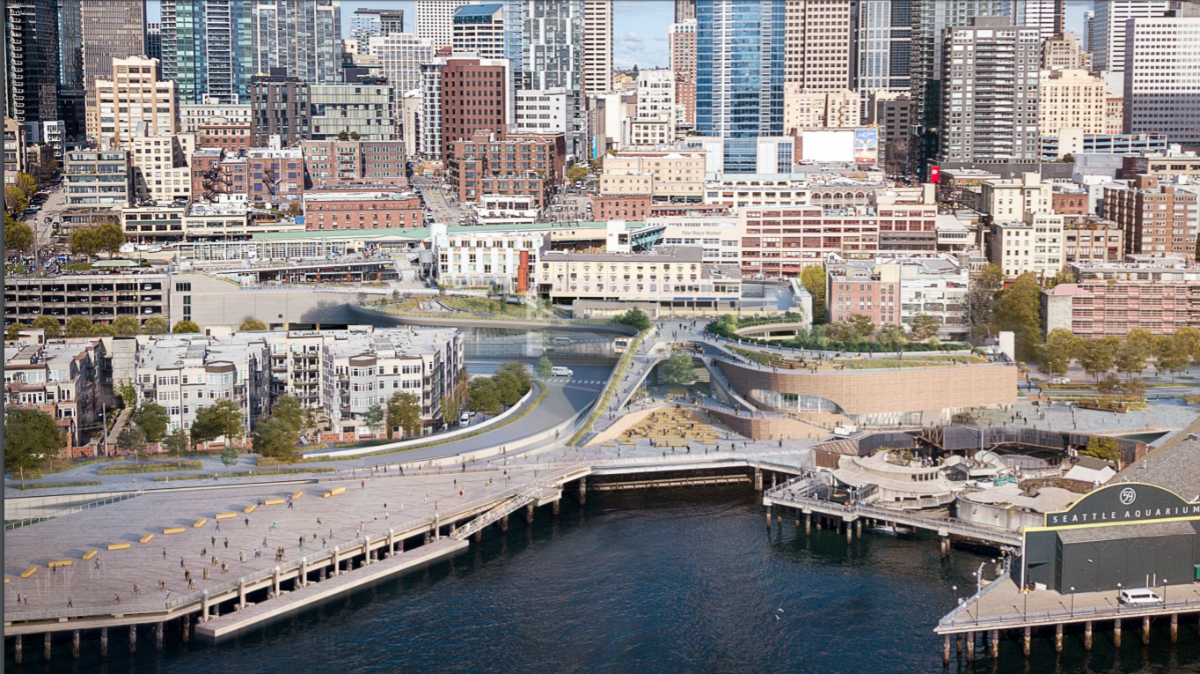
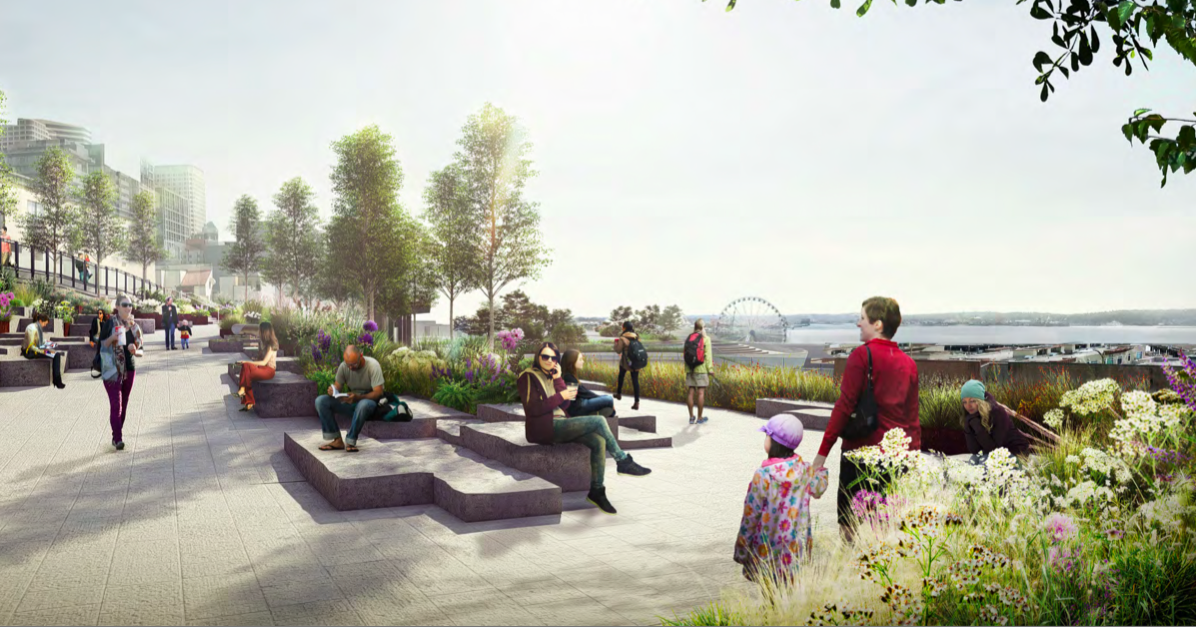
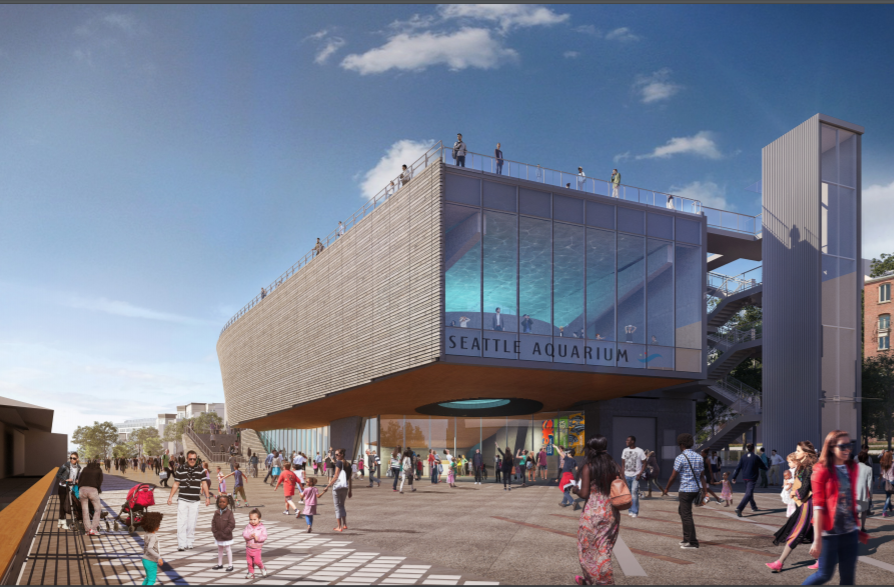
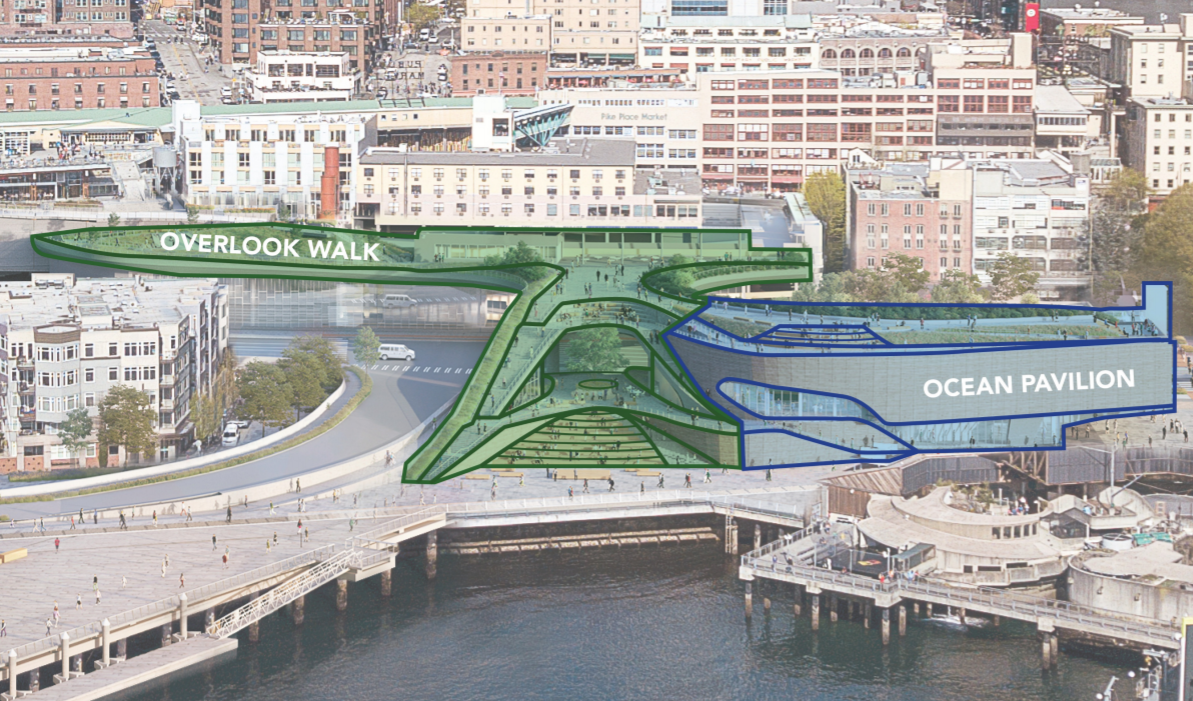
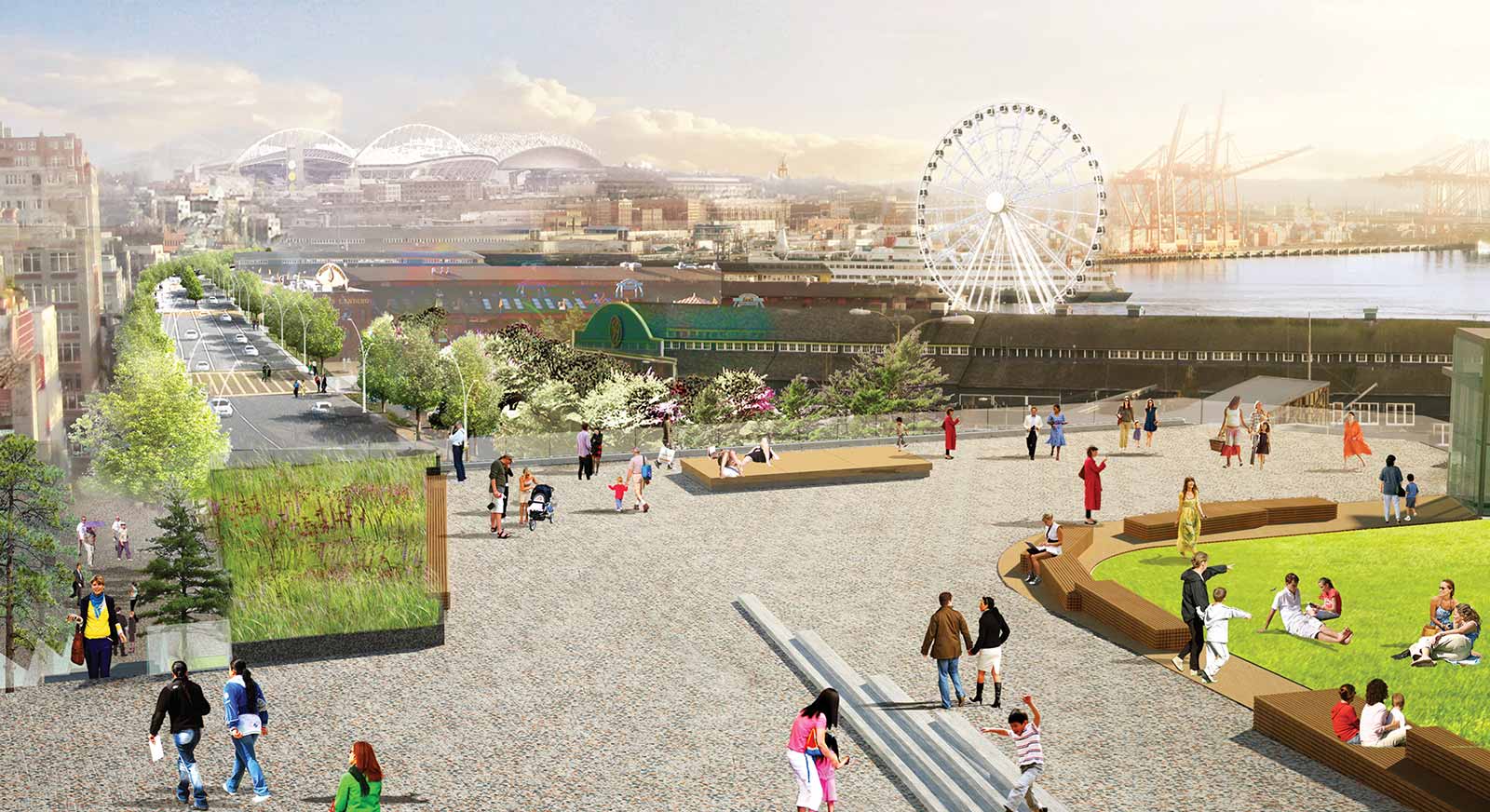
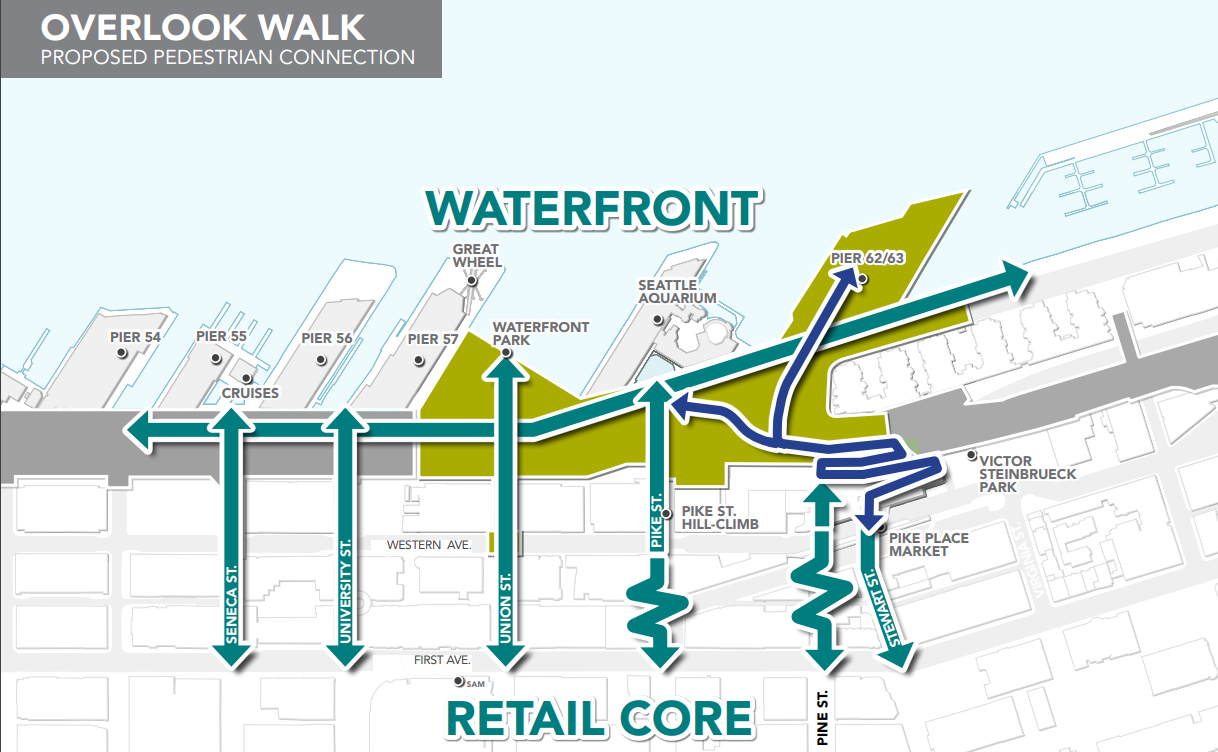
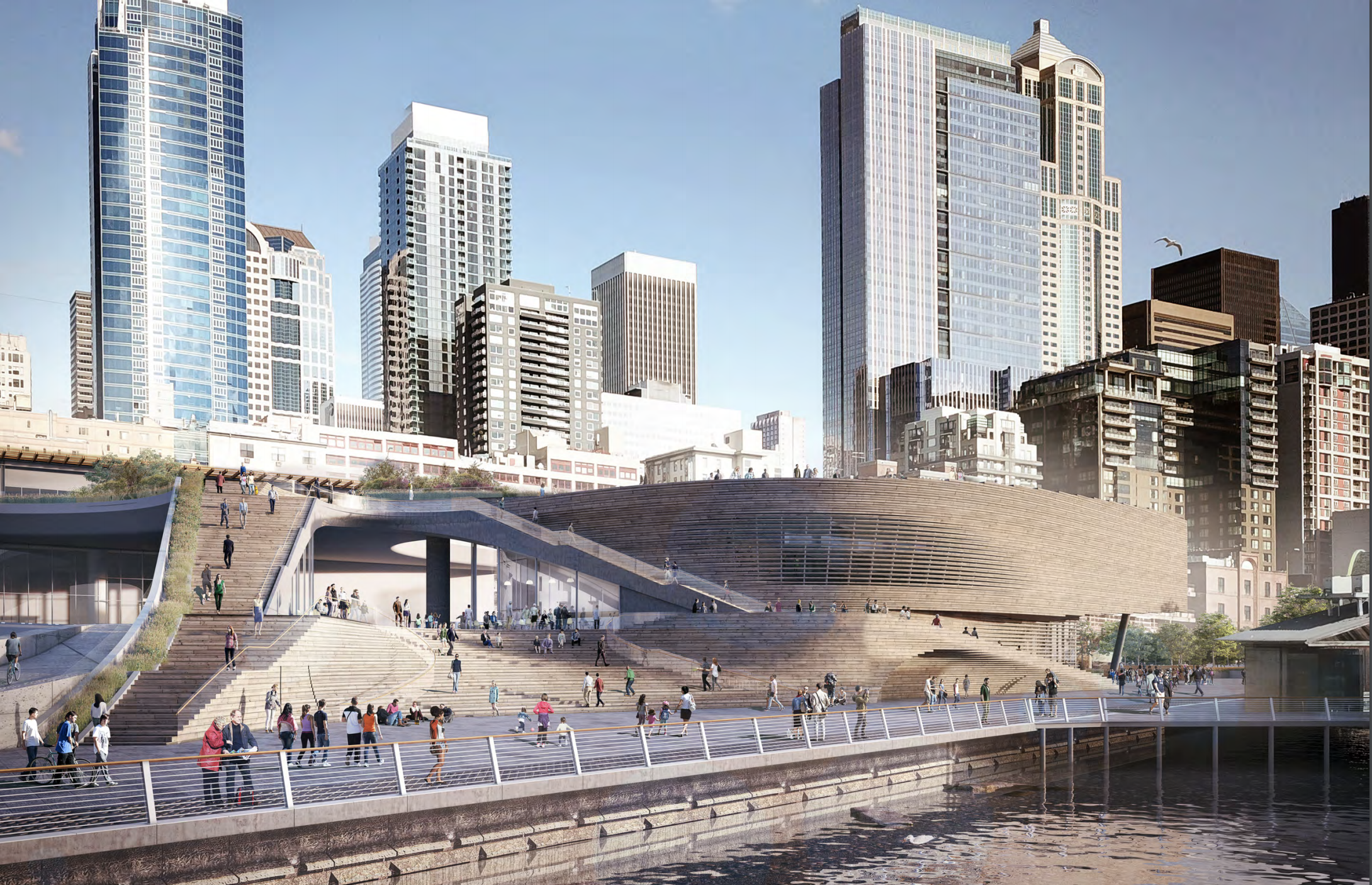
While vaguely admitting some parts of the project may have been oversold, the Seattle Times stressed the improvements it provided, dropping the spendthrift watchdog schtick the editorial board maintains for transit projects, bike lanes, policing alternatives, pro-housing zoning changes, and social housing investments.
“No major project ever turns out looking exactly like its architectural drawings, but Waterfront Park is delivering on its promises,” Blethen and company wrote. “With more private fundraising needed, it has the opportunity to create a corridor with trees and art and public-beach access and bike lanes. It will be far better than what existed before.”
It doesn’t take much to beat a double decker highway viaduct, but for its colossal budget, we should expect a lot more. Just this week, our reporter Ryan Packer highlighted a major design flaw in the new Alaskan Way bike lanes, which will require twice crossing the busy thoroughfare to continue along the bike facility — hardly convenient and likely to lead to unsafe interactions with motor vehicles. Simply put, the quality of the space for people walking, rolling, biking, and park-going would have been much higher without six lanes of traffic buzzing through — plus three lanes of ferry queuing and parking, adding more cars idling and belching out exhaust.
A popular movement in Seattle fought to block the highway tunnel so that WSDOT and the City could focus resources on surface level transit and the Waterfront Park. People’s Waterfront Coalition co-founder Cary Moon and former Mayor Mike McGinn fought hard to make that happen, but WSDOT and Governor Chris Gregoire, with the backing of big business, persisted in their car-centric plan. Car-tunnel boosters have been fighting hard ever since to convince everyone Waterfront Park is great and not possible without the tunnel, which isn’t true. Even after bullying their way to project approval, the tunnel almost didn’t happen due to an engineering catastrophe: the world’s largest tunnel boring machine broke down and had to be extracted, repaired, and reinforced at great cost, delaying project completion by three years.
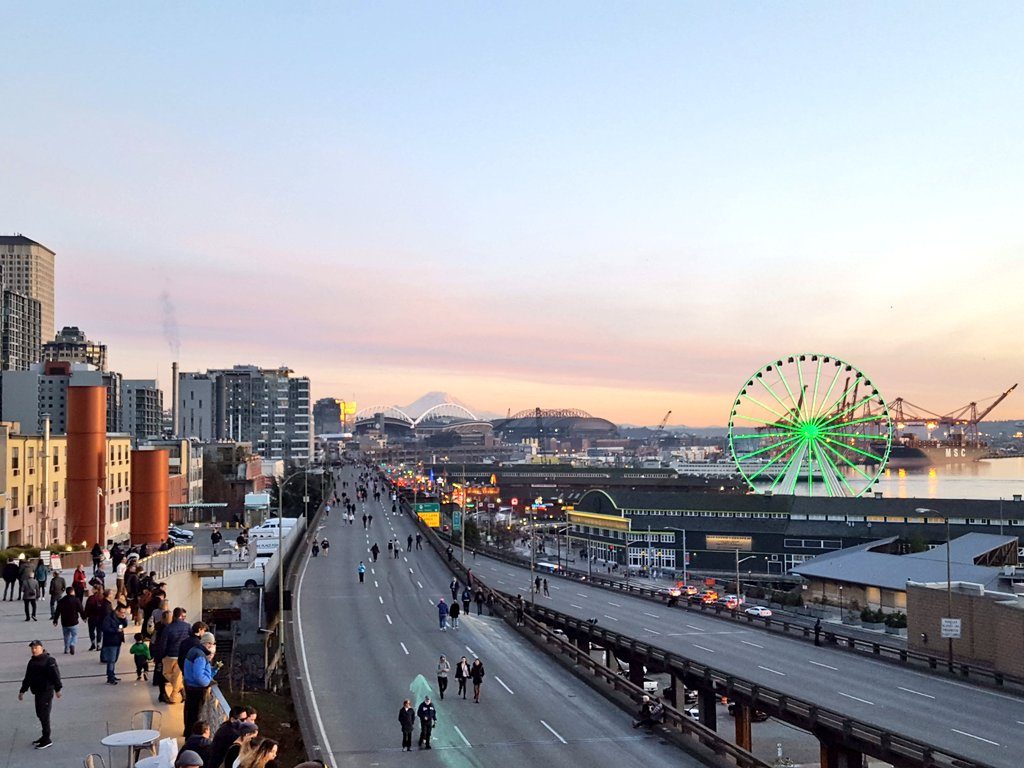
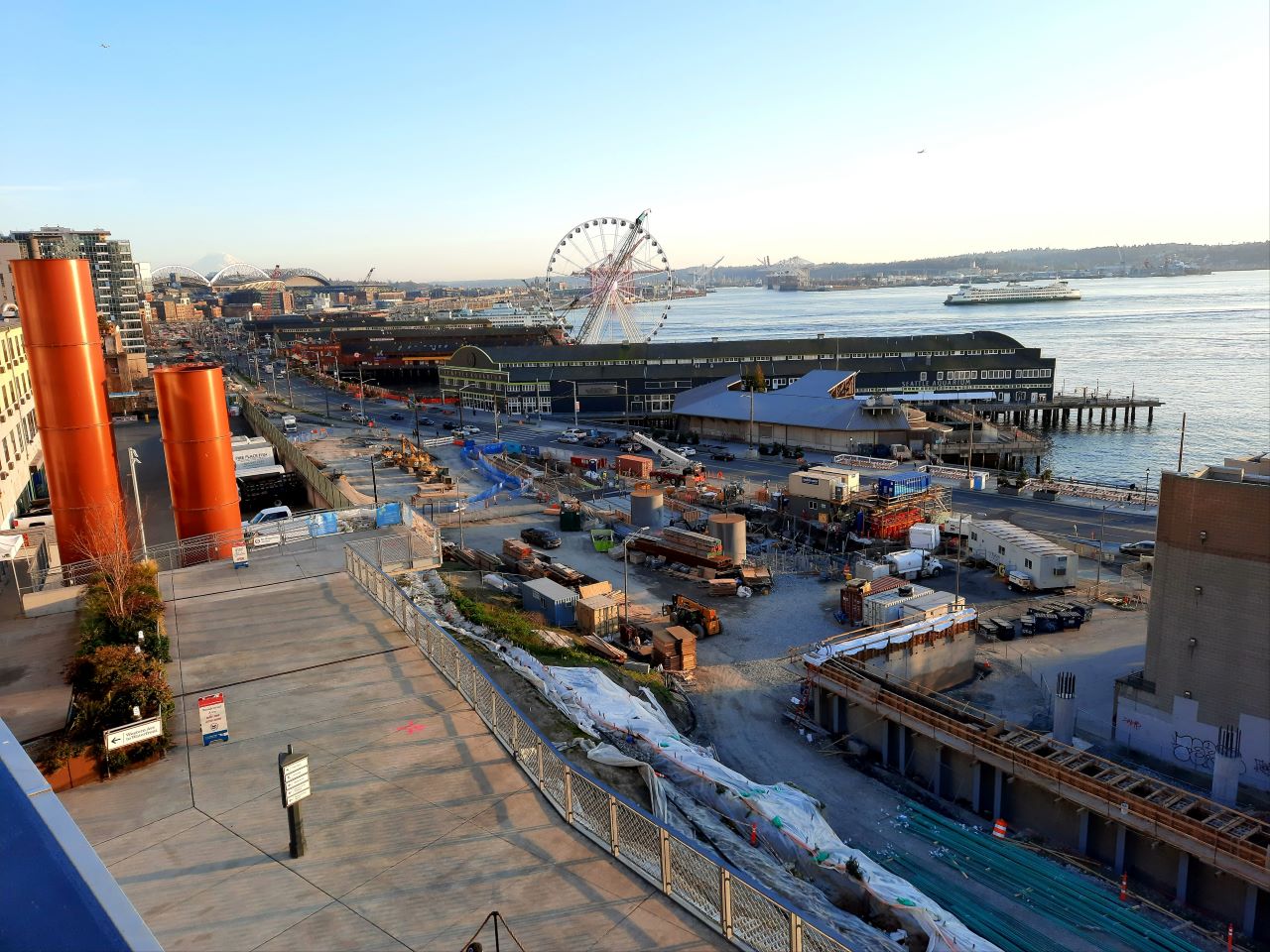
While our reporting resources are miniscule compared to the Seattle Times and other more established publications, The Urbanist has covered the waterfront project closely over the past decade and tried to sound the alarm about some troubling aspects of the project, while also celebrating the improvements. If only the bigger mastheads in this town were as fastidious, then we may not constantly be finding ourselves settling for mediocrity and climate-delaying car-centrism. (We’re in the midst of our Spring Subscriber Drive if you care to subscribe and support our work.)
- Waterfront Design Predictably Disappoints Seattle – November 2016
- Seattle Post-Viaduct: First Look at Waterfront Overlook Walk and Pavilion – May 2018
- Getting Ready for a Post-Viaduct Downtown the Only Way We Know How – September 2018
- Highway Viaducts Are Bad and Seattle Is Better Without One – January 2019
- The Viaduct Is Dead. Will Waterfront Seattle Live? – January 2019
- New 60% Designs Inch Seattle’s Waterfront Park Closer to Reality – March 2020
- Seattle’s Newest Street on the Waterfront Takes Shape – November 2020
- Pioneer Square’s Streetscapes To Get Upgrades with Waterfront Project – May 2021
- Work Starts on Railroad Way Pedestrian and Bike Space Near SoDo Stadiums – July 2021
- Two Very Different Pedestrian Bridges Coming to the Seattle Waterfront – September 2021
- Waterfront Seattle Projects Advance in 2022, But Full Trail Opening Years Away – January 2022
- SR-99 Tunnel Threatens South Lake Union’s Light Rail Future – February 2022
- Final Segment of Alaskan Way Bike Trail Being Planned with Double Street Crossing – March 2022
It reveals much that Frank Blethen, who sits on the Washington Roundtable with powerful CEOs that decides the fate of much in our state, is working so hard to spin the viaduct replacement plan as an amazing triumph. This was a $5 billion mistake that puts cars first, the park second, transit and bikes third, and the climate last. And they really want you to think it wasn’t a blunder, so that voters trust them with their next car-centric scheme. Don’t fall for it.
Doug Trumm is publisher of The Urbanist. An Urbanist writer since 2015, he dreams of pedestrian streets, bus lanes, and a mass-timber building spree to end our housing crisis. He graduated from the Evans School of Public Policy and Governance at the University of Washington in 2019. He lives in Seattle's Fremont neighborhood and loves to explore the city by foot and by bike.


